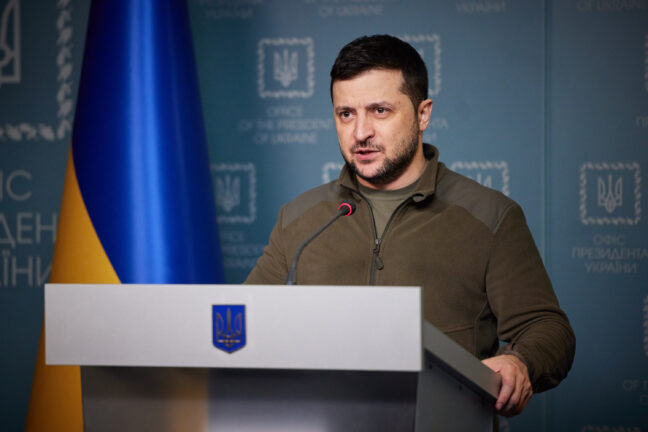Au unprecedented corruption scheme involving the highest ranks of Ukrainian politics is causing concern in Brussels. This week, the EU granted Kiev further financial assistance worth €5.9 billion, and many are asking how this money will be used. EU member states have not yet agreed on a so-called reparations loan that would allow up to €185 billion from frozen Russian assets in Europe to be sent to Ukraine.
An extensive bribery scheme involving the Ukrainian state energy company Enerhoatom has already cost two ministers their jobs. According to Ukrainian investigators, a group of people connected to Enerhoatom demanded commissions from suppliers in exchange for ensuring that companies would not lose contracts in future. So far it has been estimated that the group has earned at least €100m in this way. Of the eight people charged, five are in custody and two have fled abroad.
“Speed up reforms in your country”
The scandal has raised concerns in a number of member states about Ukraine’s credibility as the largest recipient of EU financial support. ALMOST Immediately, calls were made for Ukraine to increase transparency in the use of the funds provided and to intensify the fight against corruption.
We expect Ukraine to press ahead with anti-corruption measures and reforms in its own country. – Friedrich Merz, German Chancellor
“We expect Ukraine to press ahead with anti-corruption measures and reforms in its own country,” German Chancellor Friedrich Merz said on Thursday after a telephone call with Ukrainian President Volodymyr Zelenskyy.
Mr Merz was not the only one. “It is painful to see how corruption affects the energy sector, especially as winter approaches and Russia continues its brutal attacks on energy infrastructure,” said Lithuanian Energy Minister Žygimantas Vaičiūnas after the scandal had surfaced.
Reparation loan: problem called Belgium
The European Commission had presented a plan that would allow up to €185bn from frozen Russian assets in Europe to be used to finance the so-called reparations loan to Ukraine without these assets being confiscated.
The meeting of EU finance ministers held earlier this week showed that most member states consider the use of the so-called reparations loan for Kyiv to be the only realistic option for providing significant financial support to Ukraine in the future.
You might be interested
However, it has not yet been decided whether and how frozen Russian assets should be used to help Ukraine. Belgium currently expresses the biggest reservations, citing possible legal risks. Most of the frozen Russian assets are located in Belgium, because that is where Euroclear, financial market infrastructure group that holds a large number of Russian Central Bank bonds, is based.
EU is the crucial donor to Ukraine
Despite the corruption scandal, there are no signs yet that the EU’s financial aid to Ukraine, which is facing ongoing Russian aggression, should be endangered. On Thursday, 13 November, Commission President Ursula von der Leyen announced that the EU would disburse €5.9bn to Ukraine and promised more money for Kyiv.
Of the total sum, €4.1bn marks the completion of the European Commission’s MFA programme for Ukraine while the remaining €1.8bn is part of the Ukraine Facility instrument. The transfer was immediately welcomed by Ukarainian PM Yulia Svyrydenko, who wrote on X that “these funds mean saved lives, rebuilt infrastructure, and a strengthened economy.”
The importance of the EU as a supporter of Ukraine has grown since Donald Trump took office as US president in January 2025. Since then, the United States has virtually stopped providing direct financial aid to Ukraine.
Since the beginning of the Russian invasion in February 2022, EU institutions have sent to Ukraine aid amounting to approximately €52bn. Together with contributions from individual EU member states, the total aid exceeds €120bn, according to the Kiel Institute. That is roughly the same amount that the United States has contributed to Ukraine since February 2022.





